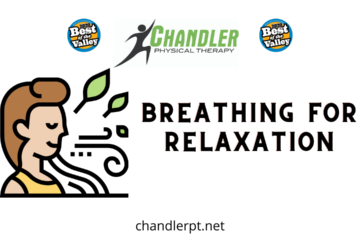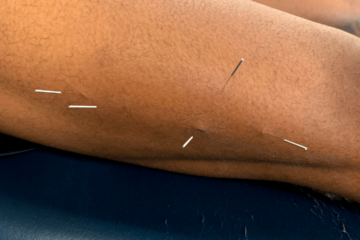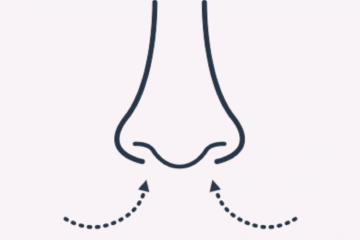I’ve had a slough of patients that have asked how the whole picture of physical therapy fits into their specific rehab. I’ve had patients ask why I am treating their hips when it’s their shoulders and back that are hurting. This blog is an attempt at my response to them – it begins with a muddled concept of the ‘core’ and ends in a long and most likely unclear picture of the human body as a whole that most likely has minimal focus and a lot of rambling. (If you’re familiar with me, this will be nothing new. If you aren’t, I’m sorry).
I’ve been struggling with the concept of core stability and my ability to reference it to patients. I liken it to a mechanic explaining engine problems to a customer. To the mechanic, the whole picture is complete and seems such an easy concept to see as a whole unit. The starter and the battery team up to fire the distributor, which is timed thanks to the timing belt and fires the sparkplugs after the valves fill in the correct order (thanks timing belt!) with fluid thanks to the fuel pump – heat is dissipated thanks to the coolant which encompasses working parts, and oil lubricates and guides each moving piece so abnormal friction doesn’t result in part wear while the frame, shocks and tires create a body for the engine and adapt to terrain as needed. Each individual piece comes together to function well with the whole, creating movement and appropriate movement based on the driver. It’s nearly impossible to outweigh the importance of each part as they are crucial to completion of the whole cycle. If something is faulty, at some point, it will affect the whole system, if caught early, perhaps only a small amount of the engine will be affected. That is the core. The whole system is the core. Confused yet?
Such is the same with the body. The ‘core’ (such a hot buzz word right now) is a complete and functional unit made up of individual pieces that must function correctly to produce accurate and efficient movement much like the engine of a car. Our skeleton, fasica, and overall shape/alignment play the role of the frame, tires and shocks. The gluts, the scapular stabilizers, the pectorals, the deep neck flexors ( and stabilizers), the abdominals, the tranverse adominus, the erector spinae, the lats, the hamstrings, the rectus femoris — all these must play this delicate game of tug-o-war to balance our our center of gravity and create a functional core unit. Dysfunction of one of these items, while not blatantly apparent, will affect the entire system. It may not be tomorrow, it may not be next week, but it will affect something without intervention.
So when a patient comes in – and is familiar with ‘core’ exercises, how do I correct them without dismissing their preconceived notions? Or do I dismiss them, aim for a fabulous paradigm shift, and go forth with gusto, true believers in tow? Personally I feel that dismissing the current concept of the core is important. Stressing quality movement over quantity. And reinforcing the idea that training in a faulty position is about as functional as peeing into the wind. (note that is NOT functional)
For the patient, education is nothing more than training the brain to function in specific situations and respond to exact stimuli. In reality, so is exercise. We’ve taken driver’s education classes to learn how to drive, why are we not taking movement education courses to learn how to move?
Take the car example: Brand new, even if nothing was wrong with the engine (core) and the engine is problem free, at the end of the day, if the driver (brain) isn’t paying attention, that car will crash. A perfect engine will always crash without good directions.
It is the same with the body. If the brain is feeding the body poor signals (turning into oncoming traffic) or isn’t paying attention (asleep at the wheel) – the perfectly functioning engine is endangering the entire car by speeding towards that culvert (i.e. crash). Just as we have to pay attention when we drive – we must pay attention when we exercise and when we move. This is exactly what happens when a baby is born with cerebral palsy. The body functions perfectly – however the driver input into that body is grossly inappropriate and results in abnormal function.
In a car, if an injury occurs (tire blowout) – we typically won’t continue to drive on it. (That would cause more damage, cost us more and sounds just plain stupid). We will call a tow truck, get us in to the nearest car repair center, and get us a new tire. In our body – when we have a blow out, our human nature to overcome kicks in. We walk, shuffle, limp and stagger our way through our routine ignoring the clear dashboard warning lights -pain- and potentially driving our car into the ground. In our car, we know that driving on a flat tire can ruin a rim. In our body, we don’t seem to grasp that concept. For us as human, living creatures, we are lucky enough to have a chassis that has an ability to repair minor damage without significant body work. Given enough time and proper recovery, our body will heal itself (cars aren’t so lucky). Sometimes bigger problems need more of a surgical approach such as an ACL repair (shock and steering column replacement as well as tire replacement). This can sometimes fix the problem, but often it can leave small alterations in the system that will wear down on the engine and chassis over time (alignment issues). Left without modification, even a ‘fixed’ problem can be a problem later. My mind is blown.
The moral of this story? Train your brain to drive your core (whole body) in a manner that minimizes wear and maximizes efficiency. Take heed of the dashboard warning lights that your body gives you and address them early. Look at yourself – how long did you drive on your last flat tire? (pulled over right away, didn’t want to cause more damage and run up a huge bill) And how long have you been ‘driving’ on that annoying knee pain? (costs too much to get checked out, can’t be that bad, right?).Why? The funny thing is, it’s always easy to get rid of a broken down car. When it comes to our bodies, we’re not so lucky.


